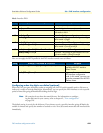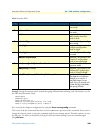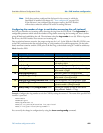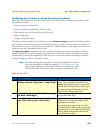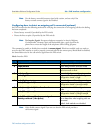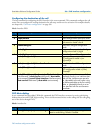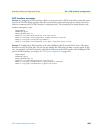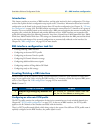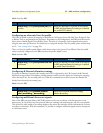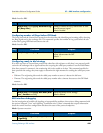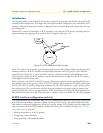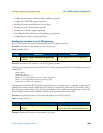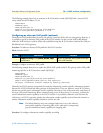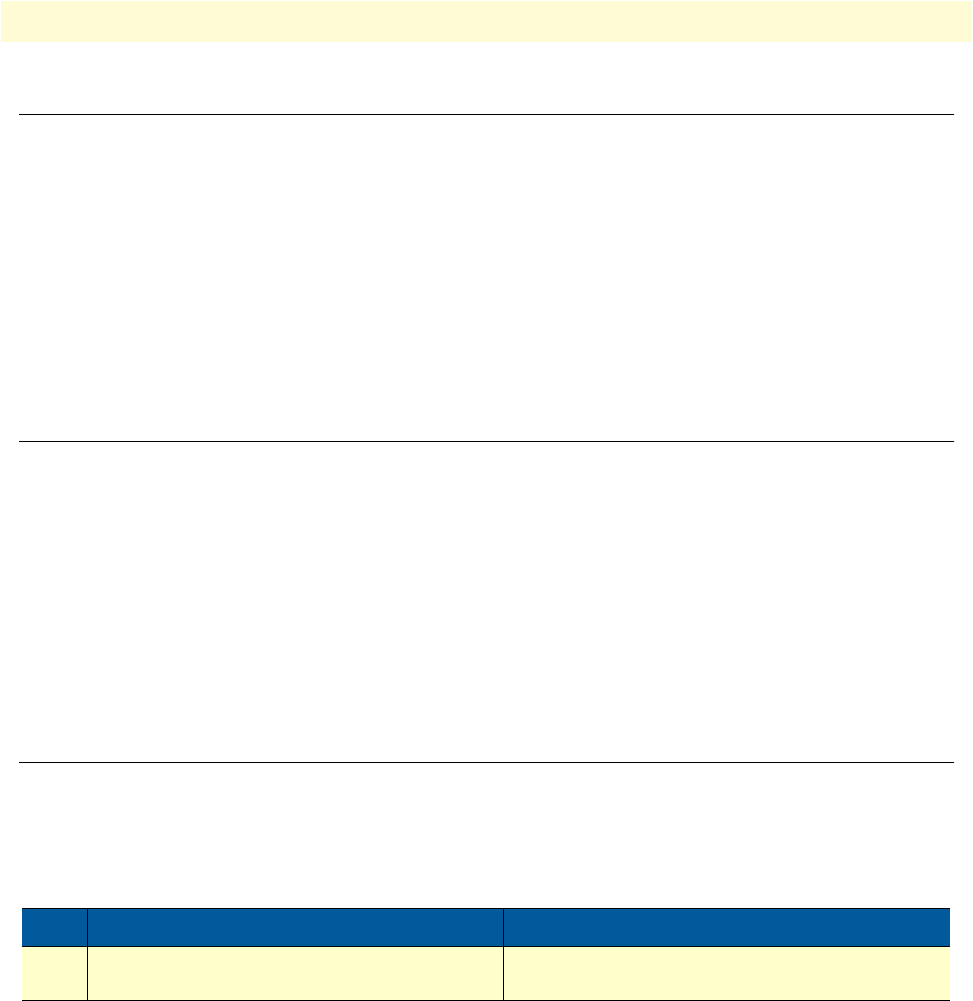
Introduction 427
SmartWare Software Configuration Guide 37 • RBS interface configuration
Introduction
This chapter provides an overview of RBS interfaces, and the tasks involved in their configuration. This chap-
ter does not explain the basic configuration steps equal to all CS interfaces. Information about basic interface
configuration can be found in the general chapter about CS interface configuration (see Chapter 33, “CS inter-
face configuration” on page 381). An RBS interface represents the connection of a T1 timeslot or of a group of
timeslots. For every timeslot bound to the interface exist a RBS protocol endpoint that masters incoming and
outgoing calls, controls the B-channel and provides different services. A RBS interface can encapsulate sub-
scriber and exchange side of the following protocols: Loop Start, Ground Start, E&M Immediate Start, E&M
Wink Start, E&M Double Wink Start. The settings are automatically taken from the RBS protocol that binds
to the interface and changes of the protocol configuration are automatically reflected on the interface. See
Chapter 20, “RBS configuration” on page 225 for more details.
RBS interface configuration task list
• Creating/Deleting a RBS interface
• Configuring an alternate PSTN profile
• Configuring an alternate Tone-Set profile
• Configuring B-Channel allocation strategy
• Configuring additional disconnect signals
• Configuring number of Rings before Off-Hook
• Configuring ready to dial strategy
Creating/Deleting a RBS interface
Interface names can be any arbitrary string. Use self-explanatory names for your interfaces to reflect their
usage in your application. After creating the RBS interface, it is necessary to bind the requested RBS proto-
col to it. See Chapter 20, “RBS configuration” on page 225 for more details.
Mode: Context CS
Configuring an alternate PSTN profile
The PSTN profile contains the configuration for data/voice transmission on circuit-switched channels (see
Chapter 48, “PSTN profile configuration” on page 597). In the case of RBS interfaces, the PSTN profile
applies to the B-Channels of the timeslots associated with the interface.
There is a PSTN profile named default, which always exists in the system. If no different PSTN profile name is
explicitly configured on the RBS interface, the profile default is used.
Step Prompt & command Purpose
1 node(ctx-cs)[switch]#[no] interface rbs
name
The “interface rbs” command creates a new inter-
face, the ‘no’ form deletes an existing one.



